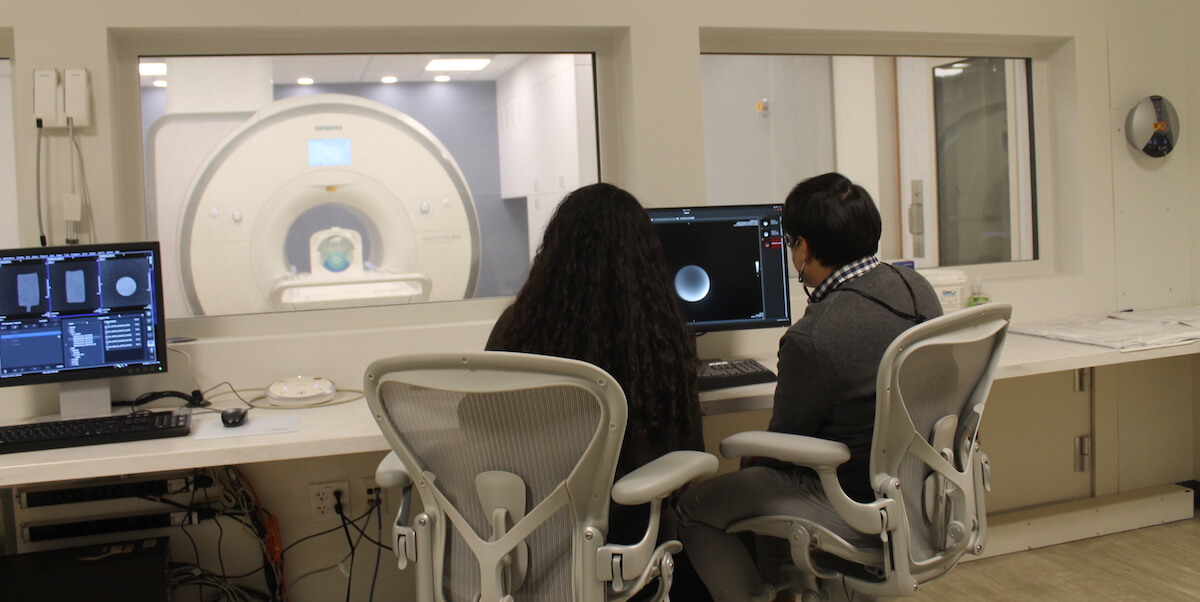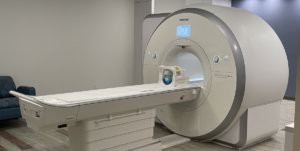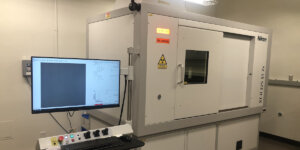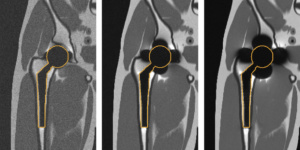
Students viewing images from the new MRI Machine at USC Michelson
Medical practitioners and researchers have long sought out detailed imaging for human organs in motion, such as the beating of the heart or inhaling and exhaling of the lungs, in order to assess conditions and to conduct procedures with increased precision, as well as to advance our understanding of the human body.
Researchers at the USC Viterbi School of Engineering and Siemens Healthineers have collaborated on the design of a series of clinical and research applications for a recently introduced new class of magnetic resonance imaging (MRI) systems. These new MRI systems developed by Siemens Healthineers features a unique combination of digital technologies and a new field strength of 0.55 Tesla and opens up new opportunities for practitioners and researchers to image parts of the human body with greater clarity than ever before. This includes imaging body movements and several new clinical applications. The MRI scanner, installed now in the Michelson Center for Convergent Bioscience at USC, includes all the technologies of a traditional MRI scanner while utilizing the advantages of this new field strength, three to six times lower than conventional systems, for unique imaging capabilities. The new collaboration will explore real-time imaging of traditionally difficult areas, e. g. in speech production or sleep therapy and, for patients who had oral cancer resection, swallowing mechanisms. Additionally, the new field strength with its specific physical characteristics opens up research opportunities for improved implant imaging, an area with increasing importance due to demographic changes.
For USC, the project builds on decades of imaging at the USC Viterbi School of Engineering—including at the school’s Signal Image Processing Institute, where early work became the basis of the JPEG and MPEG standards for still and video image compression and transmission.
The MRI scanner, installed at USC’s University Park Campus, will be available to a cross section of researchers, including the USC Viterbi School of Engineering, and the USC Dornsife College of Letters, Arts and Sciences, and practitioners and researchers at the Keck School of Medicine of USC and Children’s Hospital Los Angeles.
Krishna Nayak, the project’s principal investigator at USC and a professor of Electrical and Computer Engineering and Biomedical Engineering, explains the excitement: “MRI innovations on lower field strengths have the potential to enable brand new applications such as aggressive screening for lung cancers, which is increasing in prevalence worldwide, as well as improved imaging of the heart and gut. In addition, this technology has the potential to drive down the system cost and physical footprint so that MRI technology can be more accessible and reach more patients in need.”
“The installation of this innovative MRI scanner ushers in a new and an immensely exciting phase in our two-decades-long program on developing and using real-time imaging to the scientific and clinical study of human function,” said University Professor Shrikanth Narayanan, who has joint appointments in the departments of Electrical and Computer Engineering, Computer Science, Linguistics, Psychology, Pediatrics, and Otolaryngology Head & Neck Surgery at USC.
“Just recently we released our new MRI scanner Magnetom Free.Max which combines digital innovations, the field strength of 0.55T and the first 80 cm patient bore,” says Arthur Kaindl, Head of Magnetic Resonance at Siemens Healthineers. “The collaboration with USC is an essential building block on our strategic path to making MRI and healthcare more accessible worldwide. Our focus is on exploring new clinical opportunities of this new class of MRI scanners.”
Published on November 22nd, 2021
Last updated on November 30th, 2021













